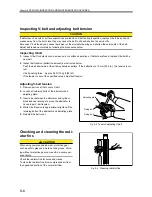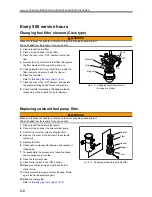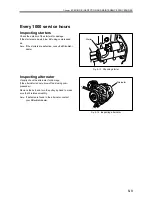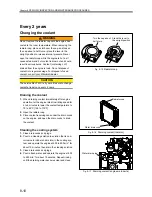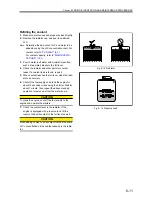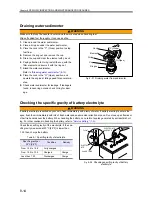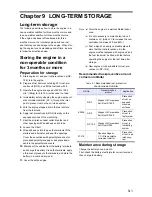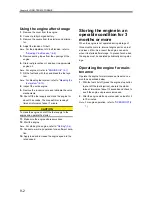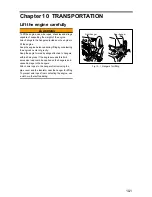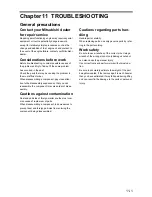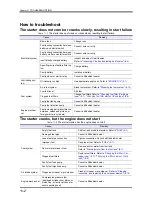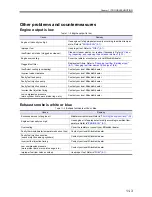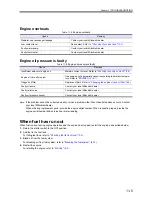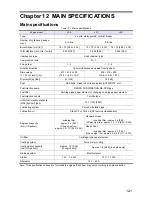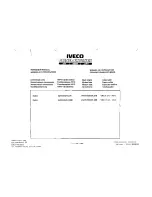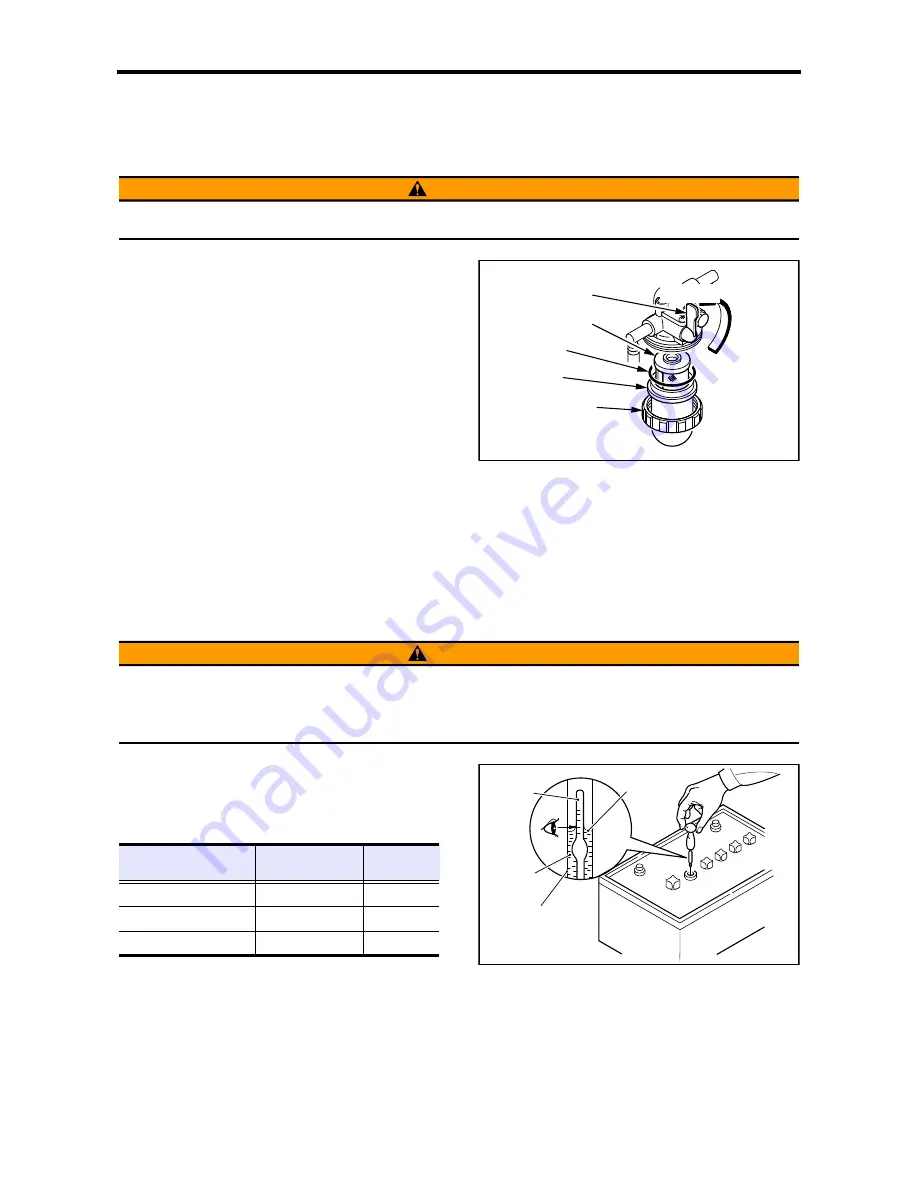
Chapter 8
PERIODIC INSPECTION AND MAINTENANCE PROCEDURES
8-14
Draining water sedimenter
:$51,1*
Make sure that any fire hazard is not around the work area when handling fuel.
Wipe off spilled fuel thoroughly. It can cause a fire.
1.
Clean around the water sedimenter.
2.
Place a drip pan under the water sedimenter.
3.
Place the cock in the "C" (Close) position to stop
fuel flow.
4.
Remove the ring nut and remove the cup.
5.
Drain the cup and clear the element with gas oil.
6.
Paying attention to O-ring, install the cup with the
filter element and secure it with the ring nut.
7.
Bleed the water sedimenter.
Refer to
"Bleeding water sedimenter" (8-13)
.
8.
Place the cock in the "O" (Open) position, and
operate the engine at idling speed for several min-
utes.
9.
Check water sedimenter for leakage. If leakage is
found, loosen ring nut and check O-ring for dam-
age.
Fig. 8-27
Draining water from sedimenter
Checking the specific gravity of battery electrolyte
:$51,1*
If battery electrolyte is spilled on your skin, flush immediately with plenty of water. If battery electrolyte enters the
eyes, flush them immediately with lots of fresh water and seek medical attention at once. Do not use open flames or
other fire hazards near the battery. When handling the battery, be careful of sparks generated by accidental short-
ing. For other cautions in handling the battery, refer to
"Service battery" (1-5)
.
Check the specific gravity of the electrolyte. If the spe-
cific gravity measured at 20°C [68°F] is lower than
1.22, then charge the battery.
Fig. 8-28
Checking specific gravity of battery
electrolyte
22SHQ
&RFN
(OHPHQW
2ULQJ
5LQJQXW
&XS
&&ORVH
Table 8-1
Specific gravity of electrolyte
Specific gravity at
20°C [68°F]
Condition
Remedy
From 1.26 to 1.28
Fully charged
-
From 1.22 to 1.26
Charged
Charge
Less than 1.22
Discharged
Charge
(/(&752/<7(
685)$&(
)/2$7
(/(&752
/<7(
*/$6678%(







